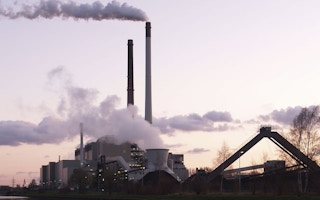In the wake of Donald Trump’s surprise victory in the US presidential election, and his refusal to recognise climate change, China’s new carbon market is attracting particular attention. China’s move is not just one of the most important outcomes of the US-China bilateral climate talks – it may be the most watched national climate change move since the Paris Agreement came into force.
In the short-term, experts are not expecting China’s national carbon market to be perfect. They say it will take several years of growth before it delivers emissions reductions, and that the most urgent task is to put the market mechanism in place quickly so that its operation can be studied and improved.
Unprecedented scale
The new market has received significant attention due to its nationwide scale and unprecedented size, which is expected to be in the range of 3-5 billion tonnes of carbon allowances per year initially. This is much larger than the EU-ETS scheme, which is currently the largest carbon market, with two billion tonnes of allowances.
In 2015, 80 per cent of all carbon trading worldwide took place on the EU market. The new Chinese market will change that.
According to a document issued by the National Development and Reform Commission (NDRC) in January, the market will at first be restricted to firms in eight sectors: petrochemicals, chemicals, building materials, steel, ferrous metals, paper-making, power-generation and aviation.
Any firm in these sectors using more than 10,000 tonnes of standard coal equivalent (TCE) of energy annually must participate in the market. Over 7,000 such firms have been identified, accounting for about half of all China’s emissions.
In October, the NDRC started allocating carbon allowances. Jiang Zhaoli, deputy head of the NDRC’s climate change department, revealed that process will be completed in the first half of 2017, after which the climate market will be launched.
Jiang also said that launch prices may be set as the average of the prices on China’s seven trial carbon markets (about 30 yuan per tonne), which will mean between 1.2 and 8 billion yuan (US$0.17-1.16 billion) of over-the-counter trading annually.
But after 2020, more varied products, such as carbon futures, will be introduced, with market trading expected to expand to between 60 and 400 billion yuan (US$8.7-58 billion) a year. Trading will also be expanded to other sectors, and to firms using 5,000 TCE per year.
Learning as you go
China currently has seven regional carbon trading trials that are spread across the developed eastern coast and less affluent inland areas. By 2015, these covered 2,000 firms, with annual carbon allowances totalling 120 million tonnes.
Unlike the EU market, which was in preparation for six years, China’s trial carbon markets launched only two years after instructions from the NDRC. At the end of 2013, trial markets went into operation in Beijing, Shanghai, Guangzhou, Shenzhen and Tianjin, with Wuhan and Chongqing following several months later. This means even the longest-running of the trial markets has only three years’ experience.
The trials have revealed significant differences in performance across regions. One aspect of this is the carbon price. Mei Dewen, head of the Beijing Environment Exchange, said that prices are only stable in Beijing – at about 50 yuan per tonne – whereas in Guangzhou and Wuhan prices are as low as 10-20 yuan.
There are also important differences in the participation of firms in the carbon markets, which is demonstrated in the varying levels of market development.
Lin Jiaqiao, of the Rock Environment and Energy Institute, thinks that in Chongqing and Hubei, in particular, there has been insufficient training. This has resulted in companies not fully understanding carbon trading, and providing inaccurate emissions data. This compares with Shanghai, where market design and company training have been very good – something that other markets could learn from.
As for the nationwide market, which will be orders of magnitude larger than the trials, Jiang pointed out that the trials have shown markets are more effective when the rule of law is stronger.
This story was published with permission from Chinadialogue.net. Read the full story.










